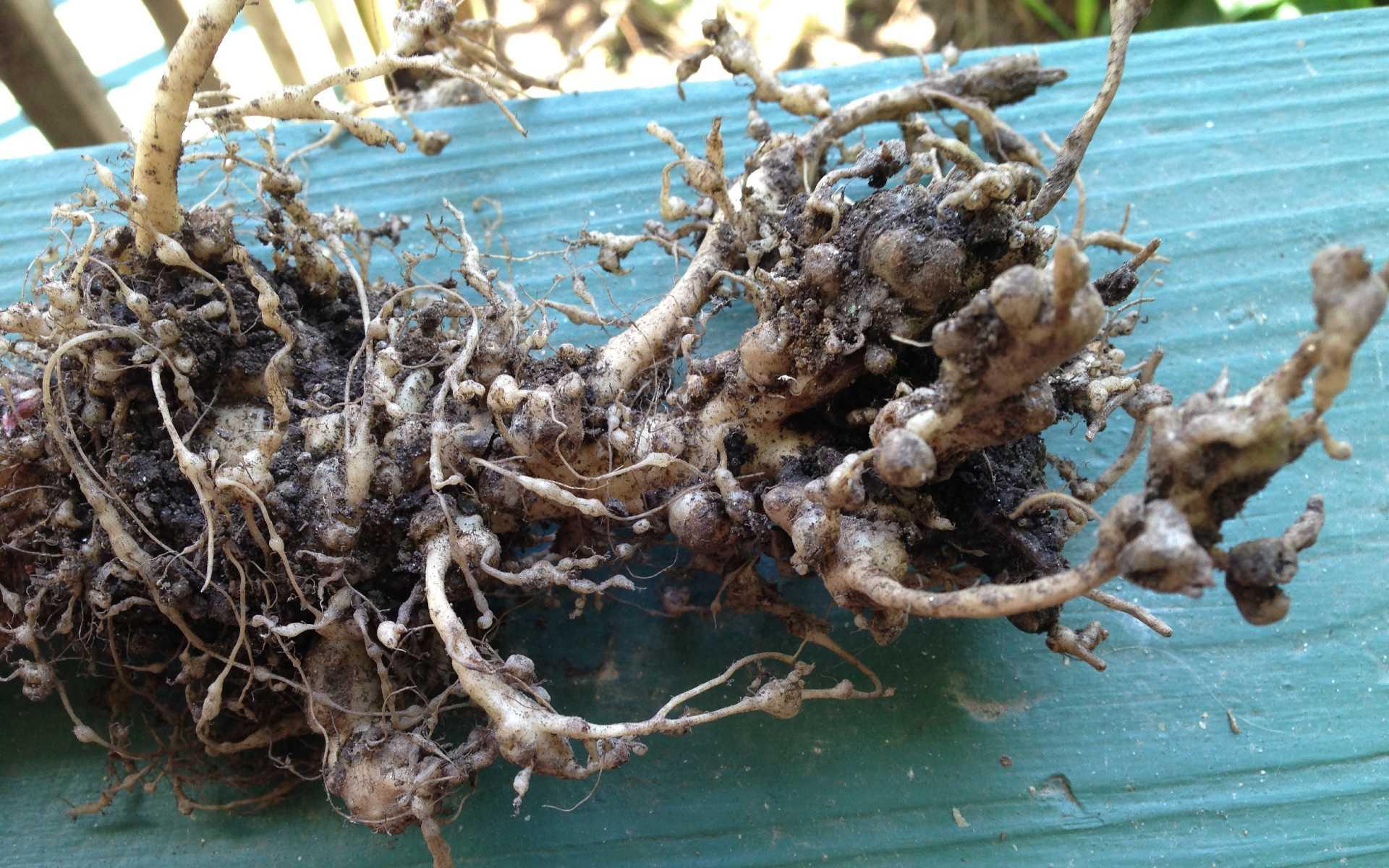Appearance
- Root-knot nematodes are very small (0.5 to 0.75 mm), colorless roundworms.
- The most common root infecting nematodes of vegetable crops are two root-knot nematode species, Meloidogyne hapla and Meloidogyne incognita.
Life cycle/habits
- They dwell in the soil, enter plants' roots as tiny larvae, and cause swellings (root knots) that can be easily seen (distinguishable from the nitrogen-fixing nodules found on legumes because the latter can be easily rubbed off the roots whereas root-knots are firmly attached).
- Both species thrive in a wide variety of soil types but are more commonly found on light-textured soils (those with a high percentage of sand).
- The root-knot nematode takes about 27 days to grow from egg to adult under normal growing season temperatures.
- The immature root-knot nematode molts once in the egg, emerges as the infective larval stage, and enters plant roots.
- The female nematode remains inside the root for the rest of her life, causing the swelling or "root-knot" to be formed around her body, which swells into a spherical shape.
- At maturity, the female extrudes her eggs into a tan gelatinous mass that can be seen on the root-knot surface.
- Each female can produce one egg mass containing from 300 to 500 eggs.
- Some nematodes also serve as vectors for plant virus diseases such as tomato ring spot and tobacco ringspot.

Host plants
- Most vegetable crops may serve as host plants.
Signs/symptoms
- Swellings or nodules on plant roots can indicate root-knot nematodes.
- Plants fail to establish, are stunted, wilt in hot weather, and decline.
- Affected plants produce fewer and smaller fruit.
- Root crops such as carrots may be deformed (forked carrots) or have hairy roots with nodules.
- Symptoms spread through a site as the season progresses and succeeding generations of juveniles hatch out.


